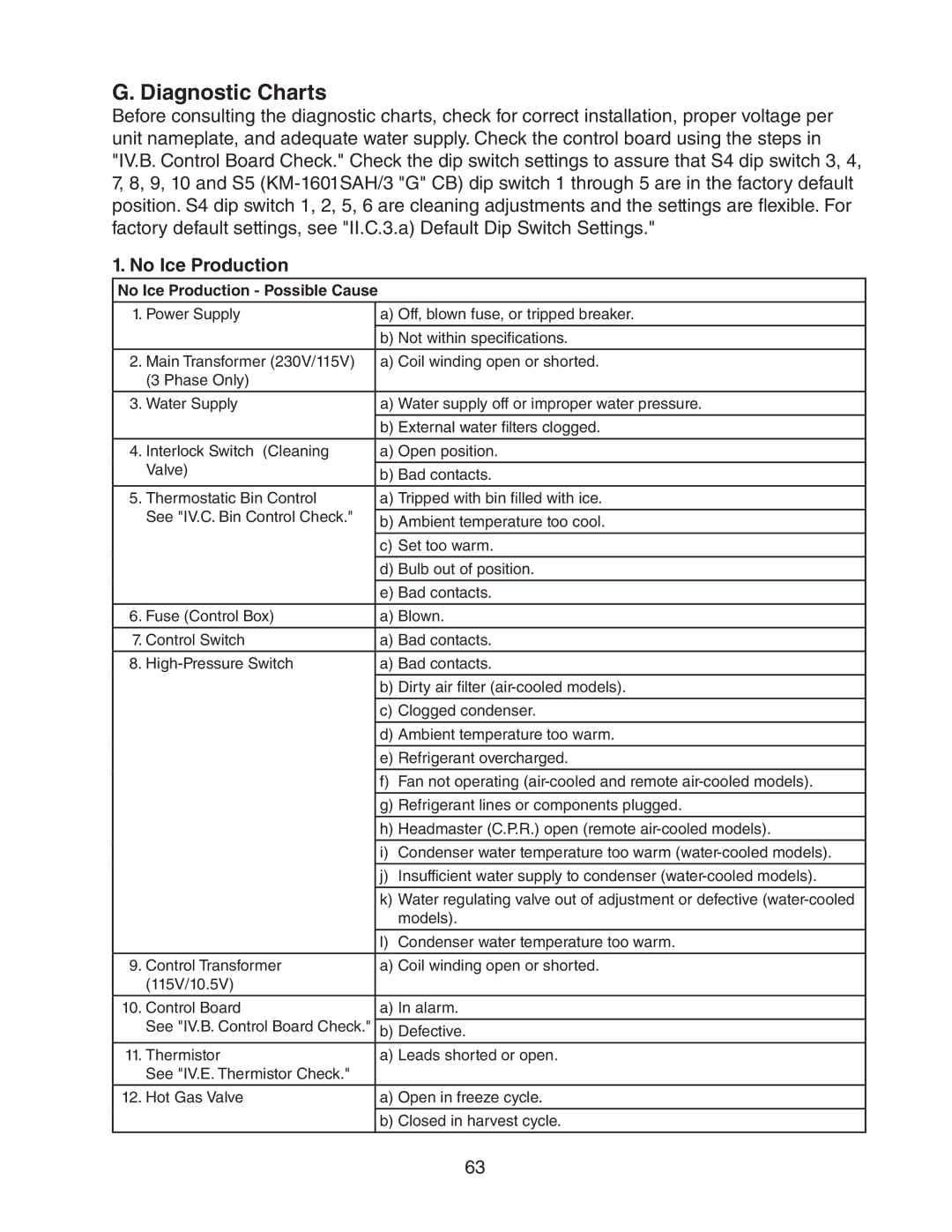KM-1601SWH/3, KM-1601SRH/3, KM-1601SAH/3 specifications
Hoshizaki has long been a trusted name in the world of commercial refrigeration and ice-making equipment. Among its offerings, the KM-1601SAH/3, KM-1601SRH/3, and KM-1601SWH/3 models stand out for their innovative features and robust design. These machines are integral for businesses that require reliable and efficient ice production, such as restaurants, hotels, and convenience stores.At the core of these models is Hoshizaki's renowned Crescent Cube Technology, which produces clear, crescent-shaped ice that is ideal for both beverage service and food presentation. The unique shape of the ice ensures reduced melting rates, helping to maintain beverage temperature for longer periods while minimizing dilution. Additionally, the crescent ice is less prone to clumping, making it easier to dispense and ideal for high-volume use.
One of the key features of the KM-1601 series is its exceptional ice production capacity. Each model can produce up to 1,600 pounds of ice in a 24-hour cycle, making them suitable for heavy-demand environments. The machines are constructed with a durable stainless steel exterior, providing not only a sleek look but also enhanced resistance to corrosion and easy maintenance.
The KM-1601SAH/3 is designed with a built-in ice storage bin, allowing for seamless integration into various setups. Its state-of-the-art refrigeration system ensures optimal energy efficiency, which is crucial for businesses looking to manage operational costs. The KM-1601SRH/3 includes a self-contained design, simplifying installation and reducing the need for external ice storage solutions.
For users concerned with hygiene, these models boast advanced sanitation features. Hoshizaki's Antimicrobial Agent is incorporated into key components to inhibit the growth of bacteria and slime, ensuring cleaner ice production. The machines also feature easy-to-access panels for quick cleaning and maintenance, reducing downtime.
Another significant characteristic is their user-friendly controls, which simplify operation and monitoring of ice production. The built-in monitoring system alerts users to any potential issues, allowing for proactive maintenance and minimal disruption to service.
The KM-1601SWH/3 model further enhances the lineup with its energy-efficient design, lightweight construction, and compact footprint, making it perfect for establishments with limited space. Collectively, these models reflect Hoshizaki's commitment to innovation, efficiency, and reliability in ice-making technology, making them a top choice for businesses that require substantial ice production without compromising on quality or safety. Whether you need a powerful ice machine for a bar, restaurant, or convenience store, Hoshizaki’s KM-1601 series delivers performance that you can depend on.

